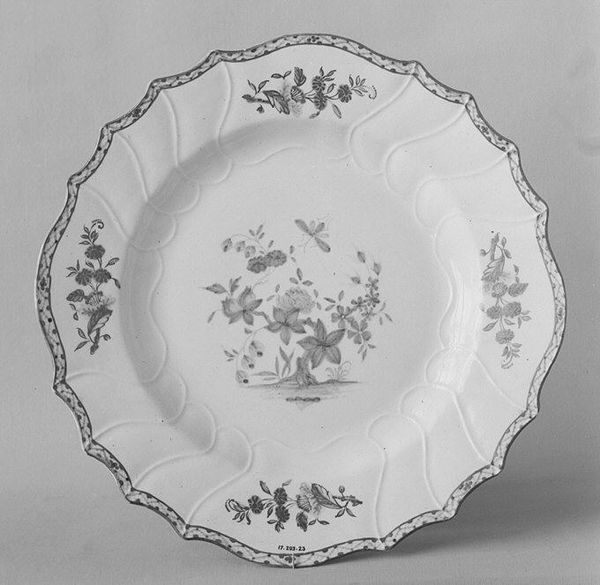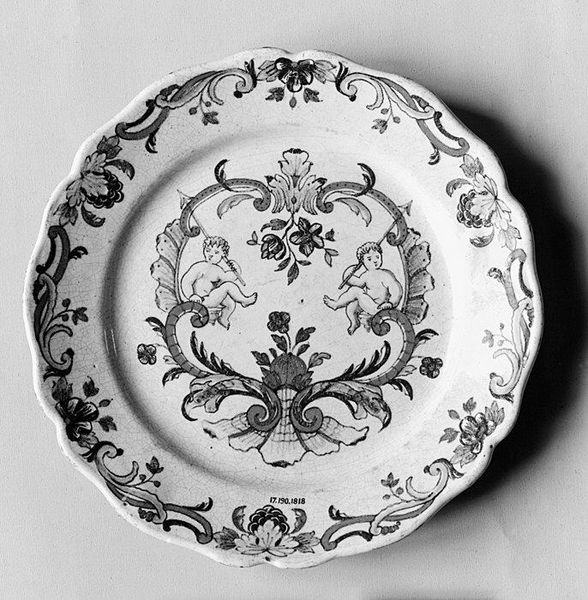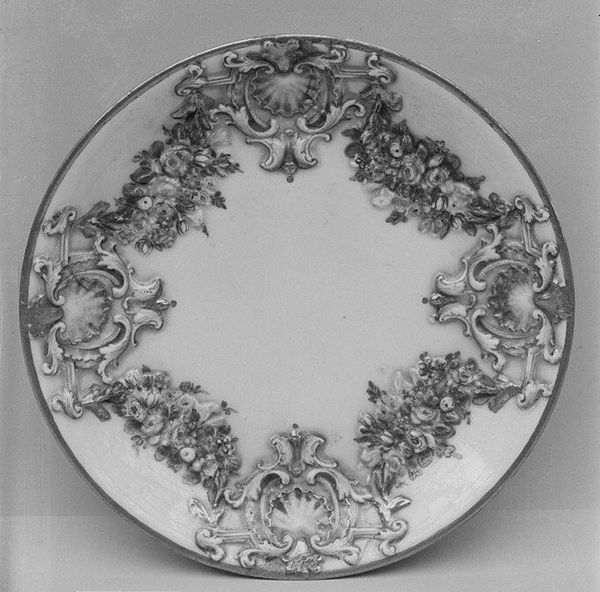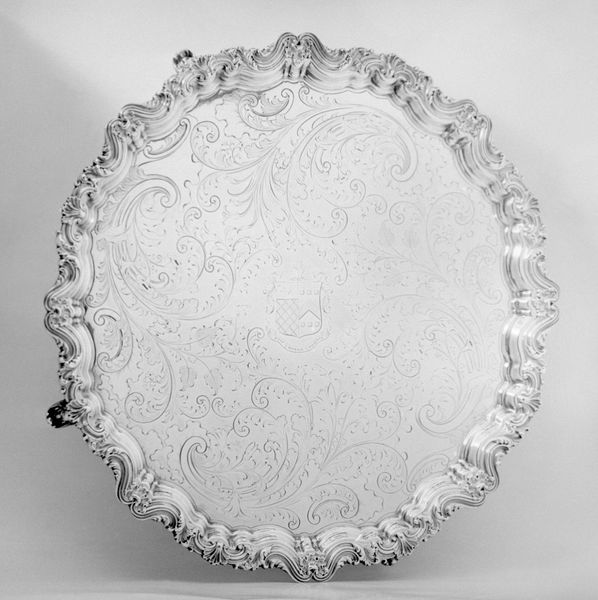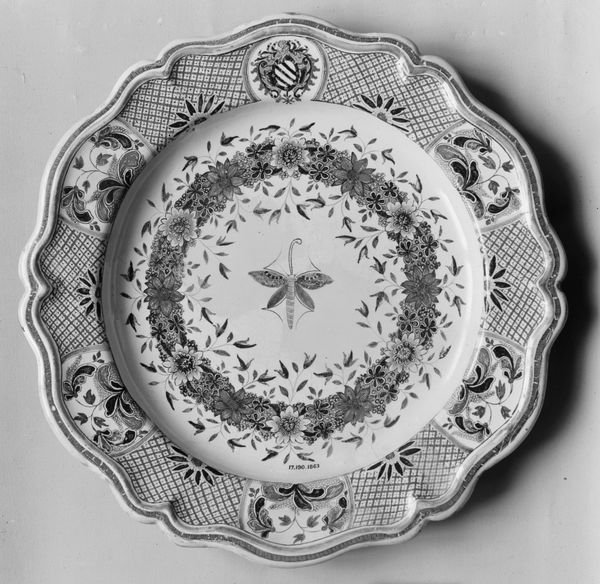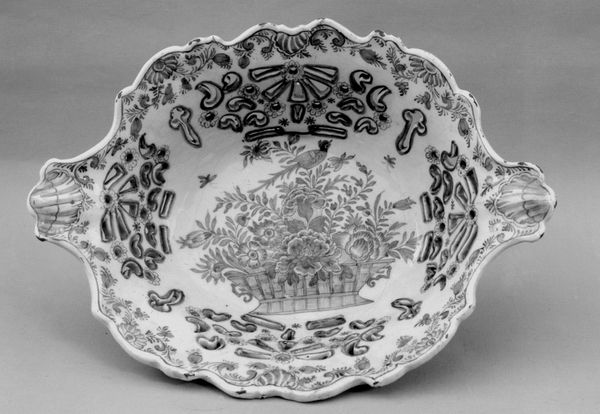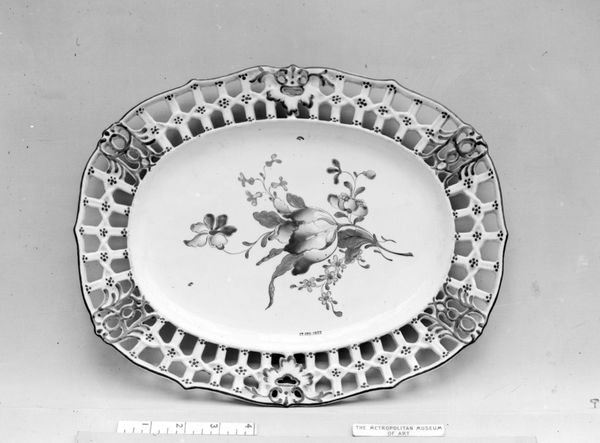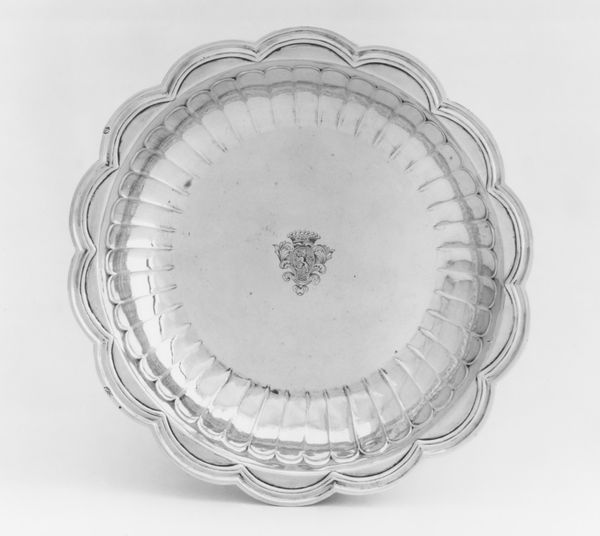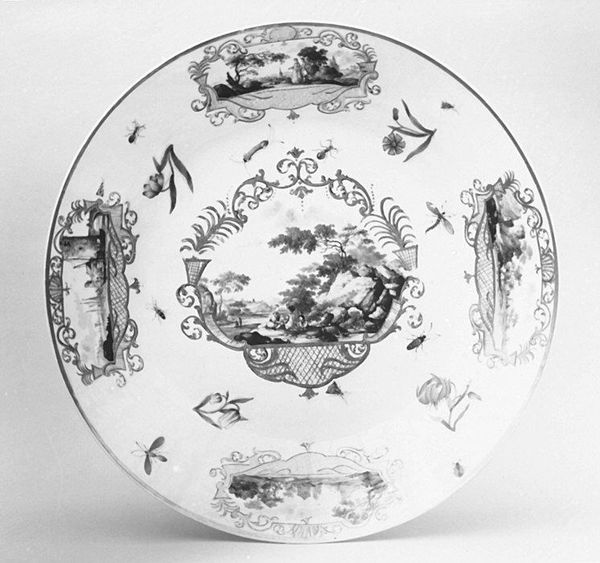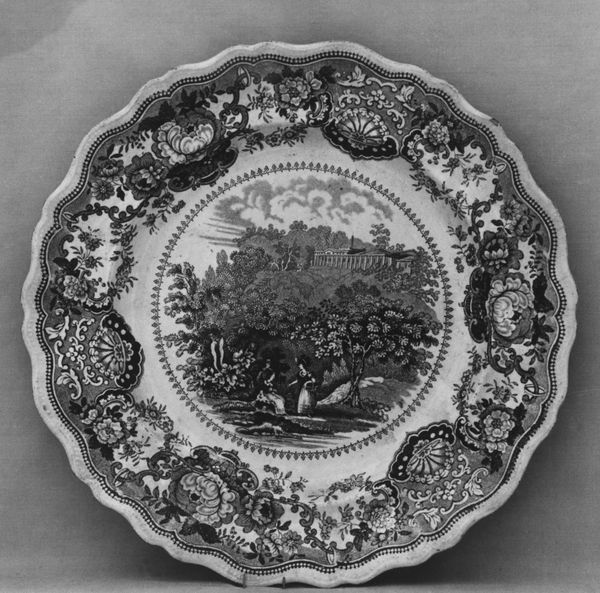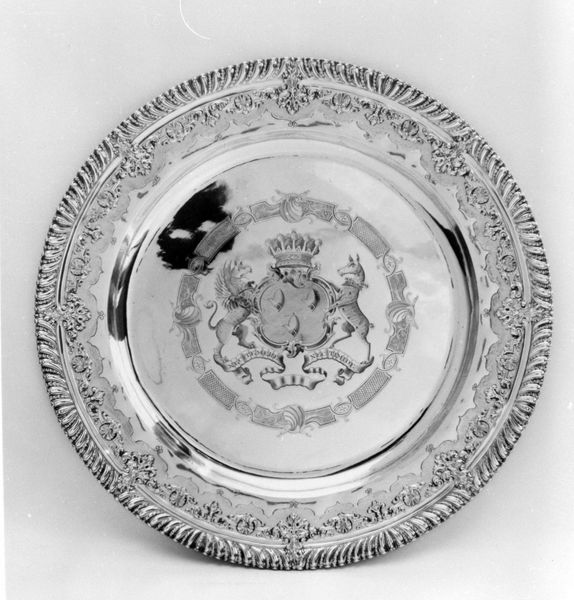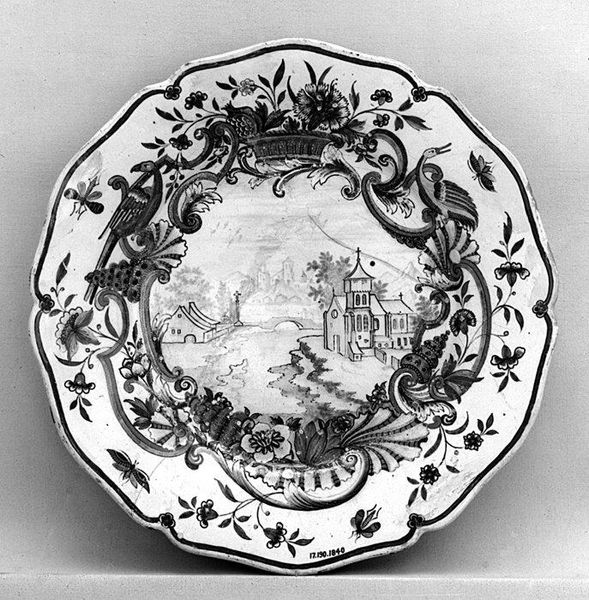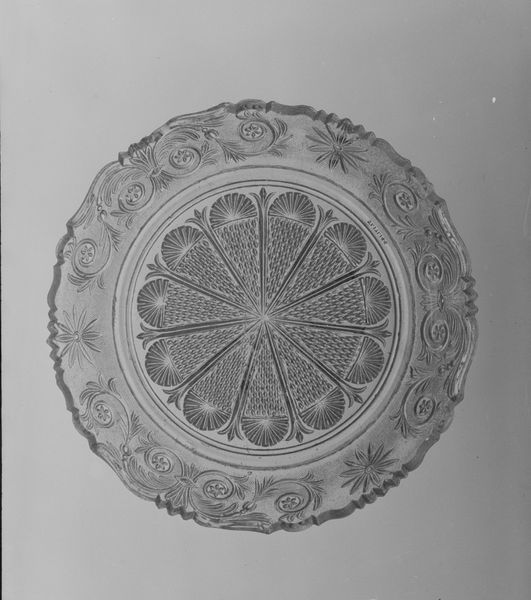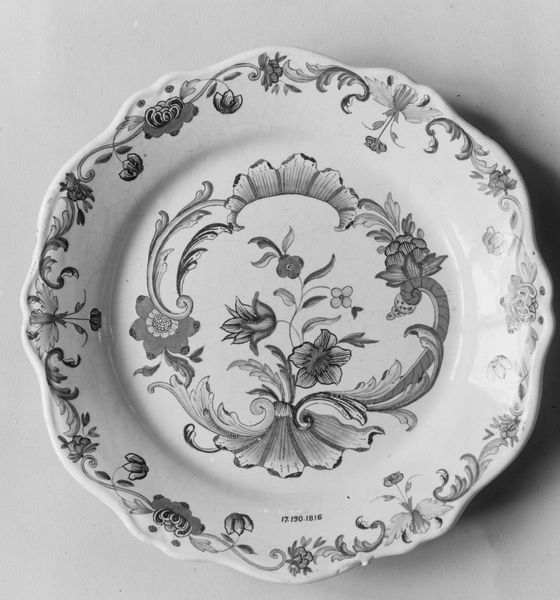
ceramic, porcelain, sculpture
#
baroque
#
ceramic
#
porcelain
#
11_renaissance
#
geometric
#
sculpture
#
repetition of black colour
#
islamic-art
#
decorative-art
Dimensions: 2 11/16 × 15 3/8 in. (6.8 × 39.1 cm)
Copyright: Public Domain
Curator: This piece, a porcelain dish created by the Meissen Manufactory, dates back to between 1735 and 1745, a time of great artistic innovation in Europe. It resides here at the Metropolitan Museum of Art. Editor: It's delicate, but somehow robust. Look at that rippled edge— almost like fabric, but definitively ceramic. The monochrome palette emphasizes the fine details of the floral arrangement and landscapes. Curator: Meissen, of course, played a critical role in the history of ceramics. As one of the first European factories to successfully produce porcelain, it represented a major power shift, challenging the dominance of Chinese imports and bolstering European economies. The dish showcases the intricate enamel painting that made Meissen so famous. Editor: Exactly! Consider the material implications here. Porcelain was like the Silicon Valley tech of its day; mastering the craft required specialized skills, controlled environments and the exploitation of natural resources and laborers. The imagery reinforces elite culture too. Note the floral arrangements painted at the center, not simply decorative, but indicators of trade and botanical interest. Curator: Absolutely, the central arrangement of blooms isn't accidental. Floral arrangements were meticulously curated, representing wealth, education, and worldly connections. Editor: The framing cartouches with these landscapes too— they tell tales of ownership, property, and a distinct leisure class, far removed from production, enabled to observe and acquire beauty instead. Were these landscapes lifted from prints or original studies? Curator: These smaller details also demonstrate an engagement with current visual culture of the time—borrowing heavily from popular print media circulating throughout Europe. By adapting these images to a luxury item, it was also designed for a specific audience that understood and enjoyed this kind of cultural commentary. Editor: Fascinating. The interplay of material luxury with social commentary… I find that contrast incredibly revealing. This piece isn't just ornamental. It holds historical context within its porcelain shell. Curator: Yes. Ultimately, a functional, luxury piece designed to project power, privilege, and cultural savvy. It serves as a mirror reflecting the ambitions and complexities of the elite in 18th-century Europe. Editor: I will never look at porcelain the same way again! All the skilled work involved, the economy of resources. Food for thought on display.
Comments
No comments
Be the first to comment and join the conversation on the ultimate creative platform.
